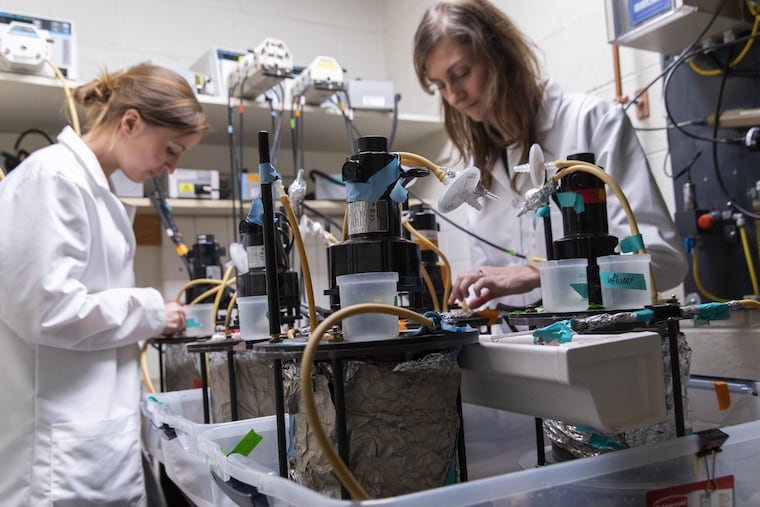Philly looks for signs of COVID-19 in its raw sewage
Philadelphia plans to contract with Temple University to look for the the genetic material of SARS CoV-2 as an indicator of the distribution of the coronavirus in the city.

Each household in Philadelphia flushes up to 20 gallons of sewage per day down the toilet, amounting to millions of gallons flowing through 3,000 miles of sewer lines toward treatment plants.
And that sewage might help Philadelphia to detect a sudden rise in coronavirus.
The city’s health and water departments have teamed up with Temple University’s Water, Health, and Applied Microbiology Laboratory for a pilot program that will determine if testing Philadelphia’s wastewater “can provide valuable information ... [to] better predict the occurrence of COVID-19 in the city’s population,” according to a statement by officials with the two departments.
Heather Murphy, director of the Temple lab and an assistant professor at the school’s College of Public Health, said that although there is an agreement in place, a contract has not been signed, so she could not yet offer many details.
Broadly, here’s how it works: People can shed the virus in their stool. Though it doesn’t appear that the virus can survive intact through the water treatment process, its RNA, or genetic material, will.
The testing looks for RNA of SARS CoV-2, the virus that causes COVID-19. Italian scientists announced last week that they found traces of the coronavirus in wastewater collected from Milan and Turin in December 2019 -- well before China reported the first cases.
Murphy said this type of testing could become an “early warning system.”
To conduct the tests, the Temple lab has been collecting one liter samples of untreated wastewater at a city treatment plant for about six weeks.
Those samples are sent to Michigan State University, which performs the assay to detect the presence of the RNA.
“It’s really kind of preliminary research right now,” Murphy said Wednesday. “There are a lot of researchers globally and across the U.S. that are looking at sewage monitoring for the coronavirus as a potential tool.”
She hopes that the Temple lab can start analyzing the results in the next week or two.
“We’ll work with the city on interpretation of the results, and how to potentially communicate those results,” she said. “We’re not really sure what they’re going to show for Philadelphia.”
Murphy, who has a Ph.D. in environmental engineering, stressed that there is not information to suggest that anyone has become sick with COVID-19 because of exposure to wastewater.
The city processes sewage at two plants along the Delaware River and one on the Schuylkill, and fully treated wastewater is released into the rivers. The city’s drinking water is pulled from the same two rivers, but upstream from where treated wastewater is discharged.
The virus is unlikely to last long in water, based on what’s currently known about it. In addition, the drinking-water treatment plants filter all water and disinfect it with chlorine, which would kill any virus.
Murphy said testing sewage to trace pathogens is not new. But, she said there are no baseline data yet for SARS CoV-2 testing and what types of concentrations to look for. However, she said that by taking weekly samples, the lab should be able to show changes over time.
Other cities are conducting similar tests to explore whether levels of RNA in sewage correlate with outbreaks.
» FAQ: Your coronavirus questions, answered.
For example, about 400 cities are using Biobot, a start-up that analyzes “viruses, bacteria, and chemical metabolites that are excreted in urine and stool and collected in sewers.” In April, New Castle County, Del., began using Biobot to help it gauge coronavirus infections.
“Theoretically, you should be able to look at these changes in signal and maybe understand a few days before possibly that your cases are climbing,” Murphy said.
That could be well before positive tests in humans show up, because so many might be asymptomatic that they don’t know to be checked.
“So it’s another mechanism that epidemiologists and public health practitioners and wastewater utilities are looking at as a surveillance tool,” Murphy said.